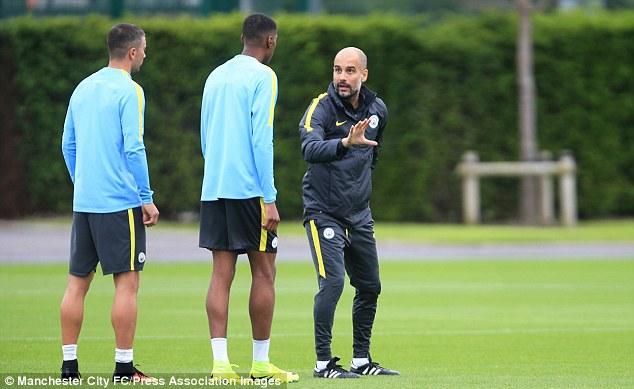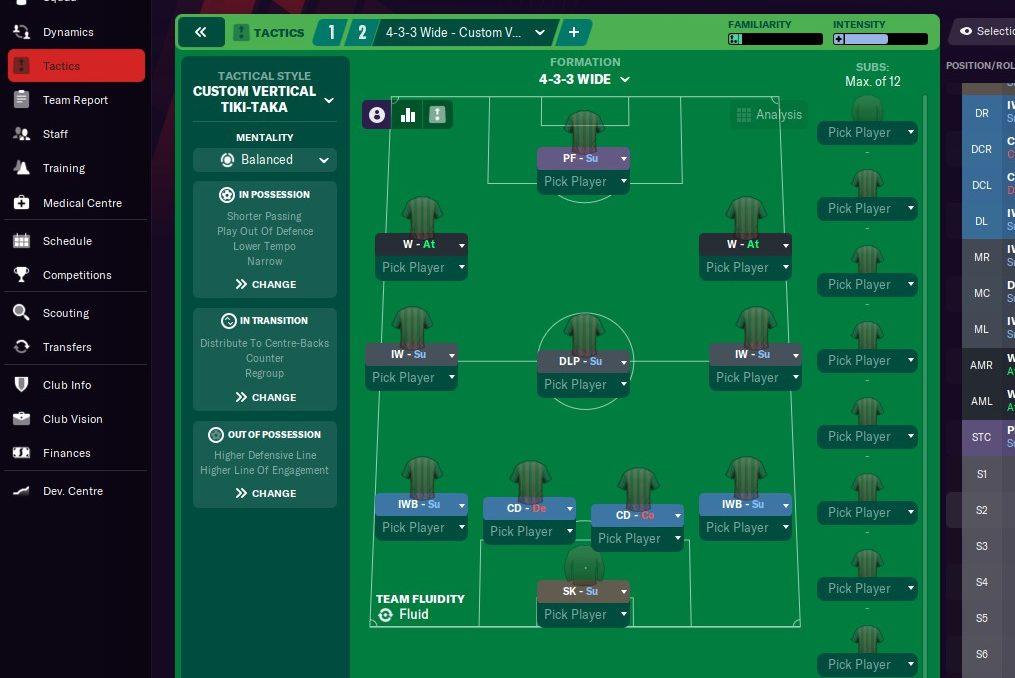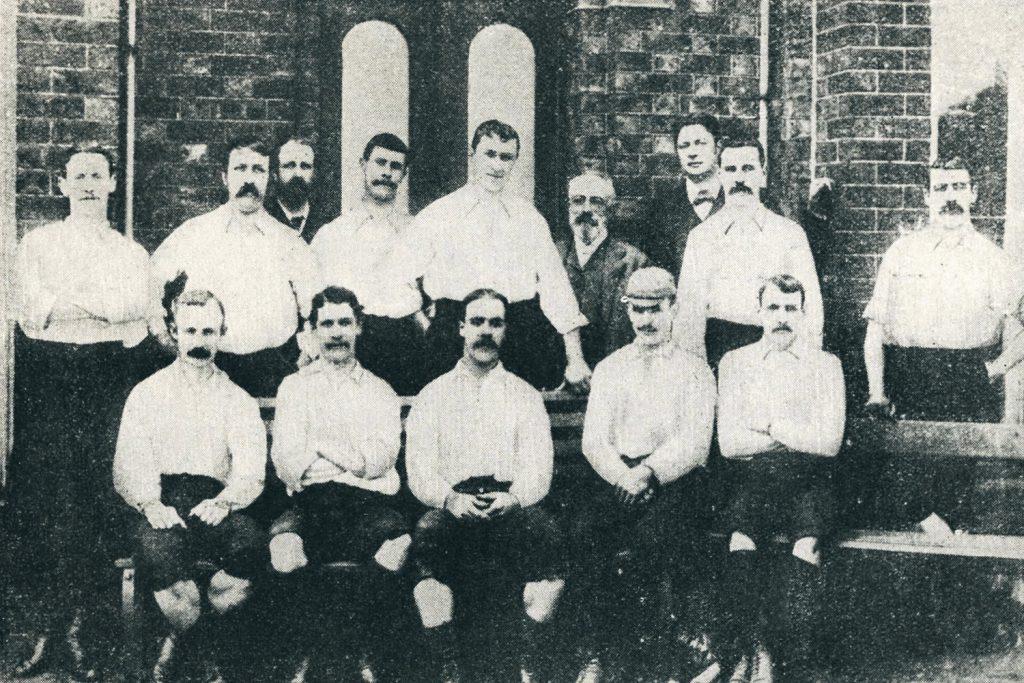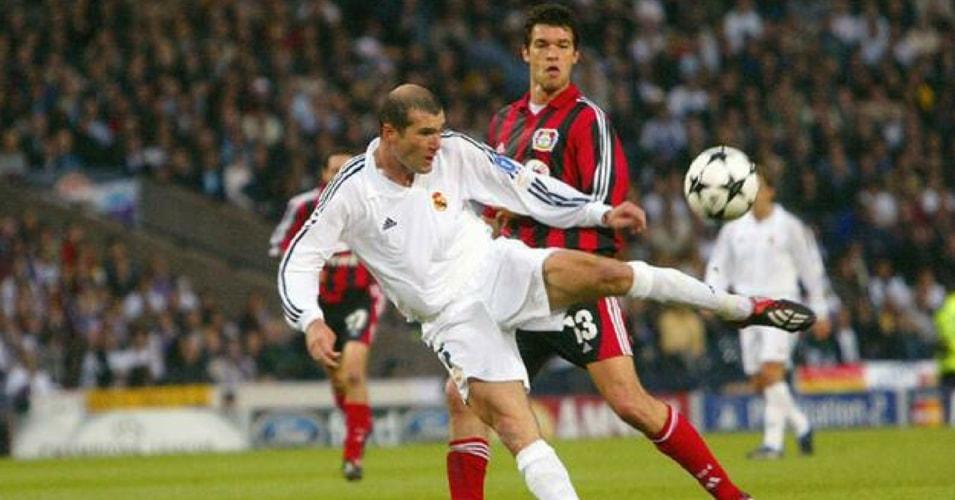
Football Manager – Revolutionary Football?
Football tactics are a constantly evolving aspect of football. They always have been and they always will be. Over the years the tactics of our beautiful game have been revolutionised, by managers, players, teams, and nations. It’s something we maybe take for granted; revolutionary football. Take the 4-4-2 for example, someone had to be the first to use that, someone had to revolutionise football and play a formation never before seen on the green grass. So just how do we come up with a revolutionary football tactic?
First, we need to look at the history of football tactics…
1800’s
The first ever international football match was played between England and Scotland in 1872. England lined up with a 1-1-8 formation and, considering there were a total of 14 forwards on the pitch, it unbelievably finished 0-0.
The 1-1-8 was considered a standard formation in the late 1800s, in part because teams, journalists, and fans alike all thought passing wasn’t considered an important part of football. Football was simply a case of which players were skillful enough to dribble around a few other players and score.
Scotland recognised that to try and match England’s skill was futile, so opted for a 2-2-6 formation with more of an emphasis on passing; stopping England’s players from getting the ball.
Late 1800’s
In ‘Association Football’; a book published in 1960, it’s stated that Wrexham won the Welsh Cup in 1877 playing an (inverted) pyramid formation. 3 years after that cup win, the 2-3-5 pyramid was officially recognised as a tactical formation. The beginnings of a transition into new football tactics had started.
This football revolution was tweaked and honed by two Scots; William Sudell and Tom Mitchell, managing Preston and Blackburn respectively. They recruited from North of Hadrians Wall, introducing a more pass orientated style. Preston won the inaugural Football League season in 1888 without losing a single game, the original ‘Invincibles’ (Sorry Arsenal fans).
Early 1900’s
In 1925, the Football Association introduced the modern day offside rule (there was an offside rule already in place, but the new one altered the number of players needed between the attacker and the goal). Immediately teams had to alter from a 5 forward approach; and Herbert Chapman, in conversations with then Arsenal forward Charlie Buchan, exploited a trick that would later become known as the offside trap.
Chapman created the ‘WM’ formation, with 3 defenders, 2 defensive midfielders, 2 attacking midfielders, and 3 forwards. He also introduced the first concept of counter attacking football, proving hugely successful and winning 3 First Division titles from 1931 to 1934 at the helm of Arsenal. The Gunners would go on to win a further 2 titles and an FA Cup playing Chapman’s revolutionary football style, after his death in 1934.
Mid 1900’s
In 1950, Hungarian Gusztav Sebes become one of the first managers to alter tactics during a match, depending on the circumstances and flow of the game.
He began to introduce concepts such as the false 9, and deep lying strikers. And, using the attacking midfielders to support his forward, the 4-2-4 formation was born.
Brazil continued developing the tactics and adopted the early editions of the 4-3-3 formation, the first formation to not use traditional wingers, instead opting for more freedom of movement from attacking players. The 4-3-3 was commonly used in England’s 1966 World Cup winning team.
Late 1900’s
In the 1970s, Helenio Herrera’s Inter Milan, with many other Italian teams, began to construct more defensive approaches to football matches. The 5-4-1, catenaccio and ultra defensive formations ruled for decades, if only for some of the greatest defenders for generations.
Around the same time, Russian and Scandinavian teams were adopting a different tactic, the 4-4-2. What is considered a stereo-typically British formation was developing much further to the East in the ’70s.
West Germany won the 1990 World Cup playing mostly a 3-5-2 formation, again something rather unseen in the world of football before. It allowed the formation to be flexible, in that fullbacks could drop deeper to create a 5-3-2 when out of possession.
Modern day
The early 2000’s saw the rise of the free roaming role. And a formation to suit such a player. Euro 2000 winners France opted for 2 defensive minded midfielders in Vieira and Deschamps and simply letting Zinedine Zidane roam free ahead of them. Whilst they had success at the 1998 World Cup, their formation had changed drastically for the tournament 2 years later. Thus, the 4-2-3-1 became the flavour of the decade.
Teams and coaches still try to find that revolutionary football idea to this day. And often you can see the similarities with historic tactics, aspects of the game that different managers adopt. The 2010 World Cup final in South Africa between Spain and the Netherlands, saw two hugely contrasting variations on the 4-2-3-1. Spain opting for a high press, possession based tactic. The Dutch reacting to mistakes and playing on the counter.
So, all that begs a question, can i (We… You…) create ‘revolutionary football’ on Football Manager?
Principles
One things for sure, every football revolutionary has ideals and principles that they will stick to, no matter what.
Pep Guardiola stated his Manchester City had forgotten his principles after a 1-1 draw with West Brom saw them 8 points off the top of the table.
“After the West Brom game when we drew 1-1, we could have won, but after the game I said to myself and my staff: ‘I don’t like the team. I don’t like the way we play. I don’t recognise my team; the way we should play.'” he told BT Sport journalists.

So, to that end we need principles to build a revolutionary tactic around. But which principles? This is a question most owners need to prioritise asking when signing a new manager or head coach. Because more often than not, that new manager will impose his principles on that team. So if you’re an owner that likes intense pressing and high tempo, maybe check to see your new gaffer doesn’t base his principles on low tempo build up and stand off defending.
The principles of a manager are effectively his playing style. Cue every single one of you shouting ‘GEGENPRESS!!!’ in your head (you all did it, i know you did)
A playing style should be flexible enough to fit a the players at a club, not the other way round. Even Jurgen Klopp ain’t getting a Liverpool style press out of the Baggies.
So, be flexible, adapt to your team. You can still stay true to your principles whilst being flexible.
Formation
Most formations have been done, to some extent or another. Those that haven’t been done, it’s probably not been done for a reason. But that doesn’t mean you can’t play around with formations. Try an asymmetric approach on either flank, try packing the midfield and neglecting the wings, opting to narrow everything down. Try the weirdest formation you can think of. There is no right or wrong here.
The history states that most football revolutions were to overcome or negate an already recognised tactic. The 2-2-6 passing was developed to combat the 1-1-8 dribbling style etc.
Maybe look at your team and figure out a formation and tactic that would combat a Liverpool style press, or any tactic that may be considered a weakness to your team.
Instructions
Use friendlies to not only improve familiarity with your new tactic, but for trial and error on player and team instructions. Sometimes a team instruction might work well in your head, but not so great when you try and implement it on a team.
Remember your principles when assigning your instructions, don’t tell everyone to sit back and defend if you’ve set your principle as a high press.
Analyse
If it doesn’t work, don’t give in. Did William Sudell give up when he lined up an inverted 2-3-5 and was laughed at by the English 1-1-8? How on Earth can you beat us when you only have 5 forwards?!
He had the last laugh with the very first unbeaten season in the English top flight.
You’ll lose some games, maybe quite a few in the beginning; you won’t revolutionise football if you give up after 5 games though.
Tweak the tactic, the formation, depending on your analysis of games. Learn to spot the trends of how you attack and defend, and you’ll start seeing how you can influence things with minor touchline shouts.
A few of mine
Now, i haven’t played any games with these formations, but a seed has been planted for each of them. And I’m going to try get some joy out of all 3.



Advice
Some of you may have already seen this handy trick on Twitter, but for those who haven’t; @ratemytactic allows Football Managers to try a formation. The site generates useful information such as penetration scores, support scores, and partnerships created by any formation. Simply move the positions into a desired formation, and select the team instructions and see the outcomes.
Of course, we at Dictate the Game are always here for tips and advice too, feel free to drop a comment below or find us on Twitter @DictateTheGame.
Let us know how you create revolutionary football, and most of all, ENJOY!
Here’s some more Dictate the Game content you might have missed
- 6 teams to manage in the MLS
- Managing a squad through fixture congestion
- Top youth academies in Scandinavia



